- Home
- Arthur C. Clarke
The Ghost from the Grand Banks (Arthur C. Clarke Collection) Page 19
The Ghost from the Grand Banks (Arthur C. Clarke Collection) Read online
Page 19
There’s a very simple analog familiar to everyone—those children’s books with blank pages sprinkled with numbers, which when joined up in the right order reveal hidden—and often surprising—pictures. The image on a TV screen is produced by a sophisticated application of the same principle.
In theory, anyone who can add and multiply could plot out the M-Set with pen or pencil on a sheet of squared paper. However, as we’ll see later, there are certain practical difficulties—notably the fact that a human life span is seldom more than a hundred years. So the set is invariably computer-generated, and usually shown on a visual display unit.
Now, there are two ways of locating a point in space. The more common employs some kind of grid reference—west-east, north-south, or on squared graph paper, a horizontal X-axis and a vertical Y-axis. But there’s also the system used in radar, now familiar to most people thanks to countless movies. Here the position of an object is given by (1) its distance from the origin, and (2) its direction, or compass bearing. Incidentally, this is the natural system—the one you use automatically and unconsciously when you play any ball game. Then you’re concerned with distances and angles, with yourself as the origin.
So think of a computer’s VDU as a radar screen, with a single blip on it, whose movements are going to trace out the M-Set. However, before we switch on our radar, I want to make the equation even simpler, to:
Z = z2
I’ve thrown c away, for the moment, and left only the z’s. Now let me define them more precisely.
Small z is the initial range of the blip—the distance at which it starts. Big Z is its final distance from the origin. Thus if it was initially 2 units away, by obeying this equation it would promptly hop to a distance of 4.
Nothing to get very excited about, but now comes the modification that makes all the difference:
Z z2
That double arrow is a two-way traffic sign, indicating that the numbers flow in both directions. This time, we don’t stop at Z = 4; we make that equal to a new z—which promptly gives us a second Z of 16, and so on. In no time we’ve generated the series
256, 65536, 4294967296…
and the spot that started only 2 units from the center is heading toward infinity in giant steps of ever-increasing magnitude.
This process of going around and around a loop is called “iteration.” It’s like a dog chasing its own tail, except that a dog doesn’t get anywhere. But mathematical iteration can take us to some very strange places indeed—as we shall soon discover.
Now we’re ready to turn on our radar. Most displays have range circles at 10, 20… 100 kilometers from the center. We will require only a single circle, at a range of 1. There’s no need to specify any units, as we’re dealing with pure numbers. Make them centimeters or light-years, as you please.
Let’s suppose that the initial position of our blip is anywhere on this circle—the bearing doesn’t matter. So z is 1.
And because 1 squared is still 1, so is Z. And it remains at that value, because no matter how many times you square 1, it always remains exactly 1. The blip may hop around and around the circle, but it always stays on it.
Now consider the case where the initial z is greater than 1. We’ve already seen how rapidly the blip shoots off to infinity if z equals 2—but the same thing will happen sooner or later, even if it’s only a microscopic shade more than 1—say 1.000000000000000000001. Watch:
At the first squaring, Z becomes
1.000000000000000000002
then
1.000000000000000000004
1.000000000000000000008
1.000000000000000000016
1.000000000000000000032
and so on for pages of printout. For all practical purposes, the value is still exactly 1. The blip hasn’t moved visibly outward or inward; it’s still on the circle at range 1.
But those zeros are slowly being whittled away, as the digits march inexorably across from the right. Quite suddenly, something appears in the third, second, first decimal place—and the numbers explode after a very few additional terms, as this example shows:
There could be a million—a billion—zeros on the right-hand side, and the result would still be the same. Eventually the digits would creep up to the decimal point—and then Z would take off to infinity.
Now let’s look at the other case. Suppose z is a microscopic amount less than 1—say something like
.99999999999999999999
As before, nothing much happens for a long time as we go around the loop, except that the numbers on the far right get steadily smaller. But after a few thousand or million iterations—catastrophe! Z suddenly shrinks to nothing, dissolving in an endless string of zeros….
Check it out on your computer. It can only handle twelve digits? Well, no matter how many you had to play with, you’d still get the same answer. Trust me….
The results of this “program” can be summarized in three laws that may seem too trivial to be worth formulating. But no mathematical truth is trivial, and in a few more steps these laws will take us into a universe of mind-boggling wonder and beauty.
Here are the three laws of the “Squaring” Program:
1. If the input z is exactly equal to 1, the output Z always remains 1.
2. If the input is more than 1, the output eventually becomes infinite.
3. If the input is less than 1, the output eventually becomes zero.
That circle of radius 1 is therefore a kind of map—or, if you like, fence—dividing the plane into two distinct territories. Outside it, numbers which obey the squaring law have the freedom of infinity; numbers inside it are prisoners, trapped and doomed to ultimate extinction.
At this point, someone may say: “You’ve only talked about ranges—distances from the origin. To fix the blip’s position, you have to give its bearing as well. What about that?”
Very true. Fortunately, in this selection process—this division of the z’s into two distinct classes—bearings are irrelevant; the same thing happens whichever direction r is pointing. For this simple example—let’s call it the S-set—we can ignore them. When we come on to the more complicated case of the M-Set, where the bearing is important, there’s a very neat mathematical trick which takes care of it, by using complex or imaginary numbers (which really aren’t at all complex, still less imaginary). But we don’t need them here, and I promise not to mention them again.
The S-set lies inside a map, and its frontier is the circle enclosing it. That circle is simply a continuous line with no thickness. If you could examine it with a microscope of infinite power, it would always look exactly the same. You could expand the S-set to the size of the Universe; its boundary would still be a line of zero thickness. Yet there are no holes in it; it’s an absolutely impenetrable barrier, forever separating the z’s less than one from those greater than one.
Now, at last, we’re ready to tackle the M-Set, where these commonsense ideas are turned upside down. Fasten your seat belts.
During the 1970s, the French mathematician Benoit Mandelbrot, working at Harvard and IBM, started to investigate the equation which has made him famous, and which I will now write in the dynamic form:
Z z2 + c
The only difference between this and the equation we have used to describe the S-set is the term c. This—not z—is now the starting point of our mapping operation. The first time around the loop, z is put equal to zero.
It seems a trifling change, and no one could have imagined the universe it would reveal. Mandelbrot himself did not obtain the first crude glimpses until the spring of 1980, when vague patterns started to emerge on computer printouts. He had begun to peer through Keats’
Charm’d magic casements, opening on the foam
Of perilous seas, in faery lands forlorn…
As we shall learn later, that word “foam” is surprisingly appropriate.
The new equation asks and answers the same question as the earlier one: What shape is the “terri
tory” mapped out when we put numbers into it? For the S-set it was a circle with radius 1. Let’s see what happens when we start with this value in the M-equation. You should be able to do it in your head—for the first few steps. After a few dozen, even a supercomputer may blow a gasket.
For starters, z = 0, c = 1. So Z = 1
First loop: Z = 12 + 1 = 2
Second loop: Z = 22 + 1 = 5
Third loop: Z = 52 + 1 = 26
Fourth loop: Z = 262 + 1… and so on.
I once set my computer to work out the higher terms (about the limit of my programming ability) and it produced only two more values before it had to start approximating:
1, 2, 5, 26, 677, 458330,
21006640000
4412789000000000000000
At that point it gave up, because it doesn’t believe there are any numbers with more than 38 digits.
However, even the first two or three terms are quite enough to show that the M-Set must have a very different shape from the perfectly circular S-set. A point at distance 1 is in the S-set; indeed, it defines its boundary. A point at that same distance may be outside the boundary of the M-Set.
Note that I say “may,” not “must.” It all depends on the initial direction, or bearing, of the starting point, which we have been able to ignore hitherto because it did not affect our discussion of the (perfectly symmetrical) S-set. As it turns out, the M-Set is only symmetrical about the X, or horizontal, axis.
One might have guessed that, from the nature of the equation. But no one could possibly have intuited its real appearance. If the question had been put to me in virginal pre-Mandelbrot days, I would probably have hazarded: “Something like an ellipse, squashed along the Y-axis.” I might even (though I doubt it) have correctly guessed that it would be shifted toward the left, or minus, direction.
At this point, I would like to try a thought experiment on you. The M-Set being literally indescribable, here’s my attempt to describe it:
Imagine you’re looking straight down on a rather plump turtle, swimming westward. It’s been crossed with a swordfish, so has a narrow spike pointing ahead of it. Its entire perimeter is festooned with bizarre marine growths—and with baby turtles of assorted sizes, which have smaller weeds growing on them….
I defy you to find a description like that in any math textbook. And if you think you can do better when you’ve seen the real beast, you’re welcome to try. (I suspect that the insect world might provide better analogies; there may even be a Mandelbeetle lurking in the Brazilian rain forests. Too bad we’ll never know.)
Here is the first crude approximation, shorn of details—much like Conroy Castle’s “Lake Mandelbrot” (Chapter 18). If you like to fill its blank spaces with the medieval cartographers’ favorite “Here be dragons” you will hardly be exaggerating.
First of all, note that—as I’ve already remarked—it’s shifted to the left (or west, if you prefer) of the S-set, which of course extends from +1 to -1 along the X-axis. The M-Set only gets to 0.25 on the right along the axis, though above and below the axis it bulges out to just beyond 0.4.
On the left-hand side, the map stretches to about -1.4, and then it sprouts a peculiar spike—or antenna—which reaches out to exactly -2.0. As far as the M-Set is concerned, there is nothing beyond this point; it is the edge of the Universe. Mandelbrot fans call it the “Utter West,” and you might like to see what happens when you make c equal to -2. Z doesn’t converge to zero—but it doesn’t escape to infinity either, so the point belongs to the set—just. But if you make c the slightest bit larger, say -2.00000…000001, before you know it you’re passing Pluto and heading for Quasar West.
Now we come to the most important distinction between the two sets. The S-set has a nice, clean line for its boundary. The frontier of the M-Set is, to say the least, fuzzy. Just how fuzzy you will begin to understand when we start to “zoom” into it; only then will we see the incredible flora and fauna which flourish in that disputed territory.
The boundary—if one can call it that—of the M-Set is not a simple line; it is something which Euclid never imagined, and for which there is no word in ordinary language. Mandelbrot, whose command of English (and American) is awesome, has ransacked the dictionary for suggestive nouns. A few examples: foams, sponges, dusts, webs, nets, curds. He himself coined the technical name fractal, and is now putting up a spirited rearguard action to stop anyone from defining it too precisely.
Computers can easily make “snapshots” of the M-Set at any magnification, and even in black and white they are fascinating. However, by a simple trick they can be colored, and transformed into objects of amazing, even surreal, beauty.
The original equation, of course, is no more concerned with color than is Euclid’s Elements of Geometry. But if we instruct the computer to color any given region in accordance with the number of times z goes around the loop before it decides whether or not it belongs to the M-Set, the results are gorgeous.
Thus the colors, though arbitrary, are not meaningless. An exact analogy is found in cartography. Think of the contour lines on a relief map, which show elevations above sea level. The spaces between them are often colored so that the eye can more easily grasp the information conveyed. Ditto with bathymetric charts; the deeper the ocean, the darker the blue. The mapmaker can make the colors anything he likes, and is guided by aesthetics as much as geography.
It’s just the same here—except that these contour lines are set automatically by the speed of the calculation—I won’t go into details. I have not discovered what genius first had this idea—perhaps Monsieur M. himself—but it turns them into fantastic works of art. And you should see them when they’re animated….
One of the many strange thoughts that the M-Set generates is this. In principle, it could have been discovered as soon as the human race learned to count. In practice, since even a “low magnification” image may involve billions of calculations, there was no way in which it could even be glimpsed before computers were invented! And such movies as Art Matrix’ Nothing But Zooms would have required the entire present world population to calculate night and day for years—without making a single mistake in multiplying together trillions of hundred-digit numbers….
I began by saying that the Mandelbrot Set is the most extraordinary discovery in the history of mathematics. For who could have possibly imagined that so absurdly simple an equation could have generated such—literally—infinite complexity, and such unearthly beauty?
The Mandelbrot Set is, as I have tried to explain, essentially a map. We’ve all read those stories about maps which reveal the location of hidden treasure.
Well, in this case—the map is the treasure!
Colombo, Sri Lanka: 1990 February 28

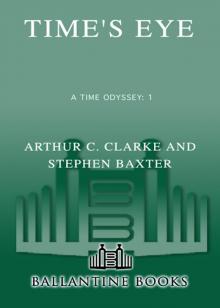 Time's Eye
Time's Eye The Sentinel
The Sentinel Prelude to Space
Prelude to Space Earthlight (Arthur C. Clarke Collection)
Earthlight (Arthur C. Clarke Collection)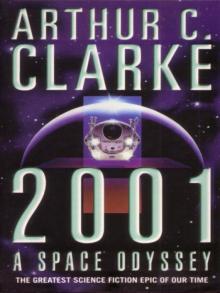 2001: A Space Odyssey
2001: A Space Odyssey Against the Fall of Night
Against the Fall of Night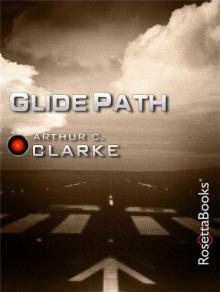 Glide Path
Glide Path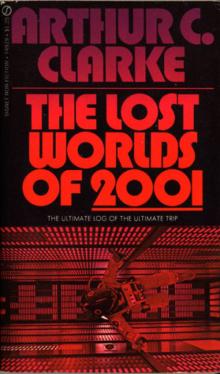 The Lost Worlds of 2001
The Lost Worlds of 2001 The Trigger
The Trigger Reach for Tomorrow
Reach for Tomorrow Islands in the Sky
Islands in the Sky The Songs of Distant Earth
The Songs of Distant Earth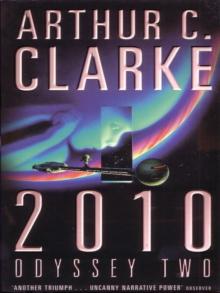 2010: Odyssey Two
2010: Odyssey Two Childhood's End
Childhood's End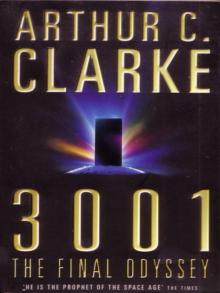 3001: The Final Odyssey
3001: The Final Odyssey The Fountains of Paradise
The Fountains of Paradise Rama: The Omnibus
Rama: The Omnibus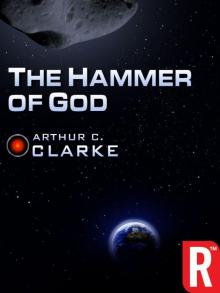 The Hammer of God
The Hammer of God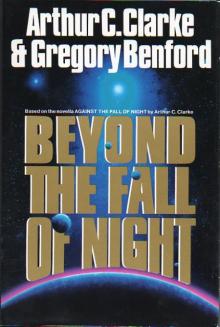 Beyond the Fall of Night
Beyond the Fall of Night Tales From Planet Earth
Tales From Planet Earth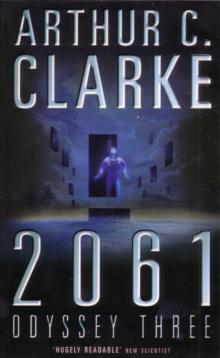 2061: Odyssey Three
2061: Odyssey Three Tales From the White Hart
Tales From the White Hart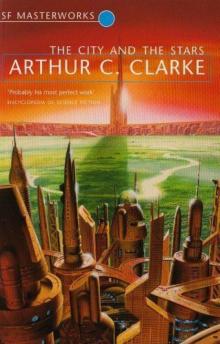 The City and the Stars/The Sands of Mars
The City and the Stars/The Sands of Mars The Star
The Star Imperial Earth
Imperial Earth The Light of Other Days
The Light of Other Days Firstborn
Firstborn The Other Side of the Sky
The Other Side of the Sky Cradle
Cradle The Wind From the Sun
The Wind From the Sun The Ghost From the Grand Banks and the Deep Range
The Ghost From the Grand Banks and the Deep Range The Deep Range
The Deep Range Expedition to Earth
Expedition to Earth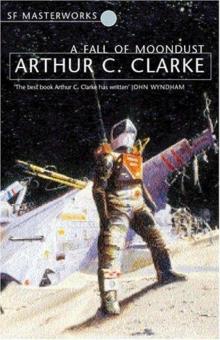 A Fall of Moondust
A Fall of Moondust Dolphin Island (Arthur C. Clarke Collection)
Dolphin Island (Arthur C. Clarke Collection) Richter 10
Richter 10 The City and the Stars
The City and the Stars Tales of Ten Worlds
Tales of Ten Worlds Dolphin Island
Dolphin Island Expedition to Earth (Arthur C. Clarke Collection: Short Stories)
Expedition to Earth (Arthur C. Clarke Collection: Short Stories)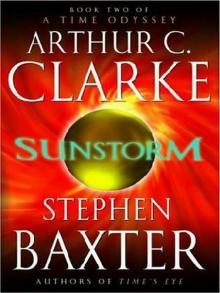 Sunstorm
Sunstorm Rendezvous with Rama
Rendezvous with Rama The Collected Stories of Arthur C. Clarke
The Collected Stories of Arthur C. Clarke Trouble with the Natives
Trouble with the Natives Rama Revealed r-4
Rama Revealed r-4 The Sixth Science Fiction Megapack
The Sixth Science Fiction Megapack Firstborn to-3
Firstborn to-3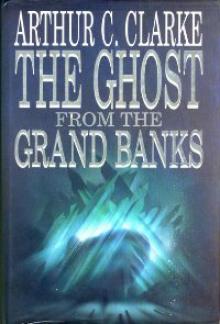 The Ghost from the Grand Banks
The Ghost from the Grand Banks Into the Comet
Into the Comet The Fires Within
The Fires Within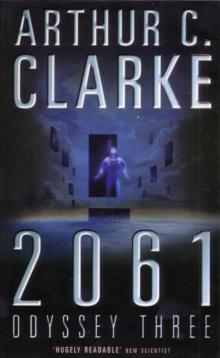 2061: Odyssey 3
2061: Odyssey 3 The Ninth Science Fiction Megapack
The Ninth Science Fiction Megapack The Coast of Coral
The Coast of Coral The Ghost from the Grand Banks (Arthur C. Clarke Collection)
The Ghost from the Grand Banks (Arthur C. Clarke Collection) The Space Trilogy
The Space Trilogy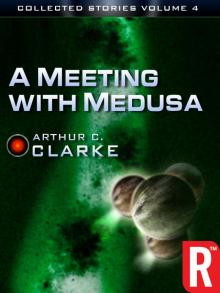 A Meeting With Medusa
A Meeting With Medusa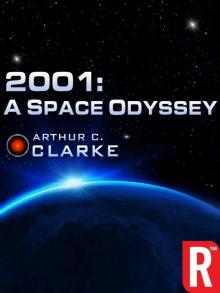 2001: A Space Odyssey (Arthur C. Clarke Collection: The Odyssey)
2001: A Space Odyssey (Arthur C. Clarke Collection: The Odyssey) Islands in the Sky (Arthur C. Clarke Collection)
Islands in the Sky (Arthur C. Clarke Collection)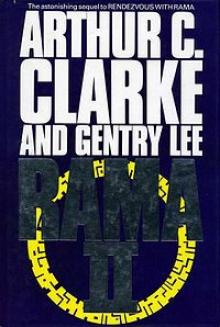 Rama II r-2
Rama II r-2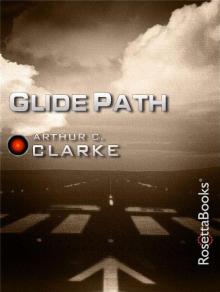 Glide Path (Arthur C. Clarke Collection)
Glide Path (Arthur C. Clarke Collection) The Sixth Science Fiction Megapack: 25 Classic and Modern Science Fiction Stories
The Sixth Science Fiction Megapack: 25 Classic and Modern Science Fiction Stories Tales from the White Hart (Arthur C. Clarke Collection: Short Stories)
Tales from the White Hart (Arthur C. Clarke Collection: Short Stories) The Reluctant Orchid
The Reluctant Orchid